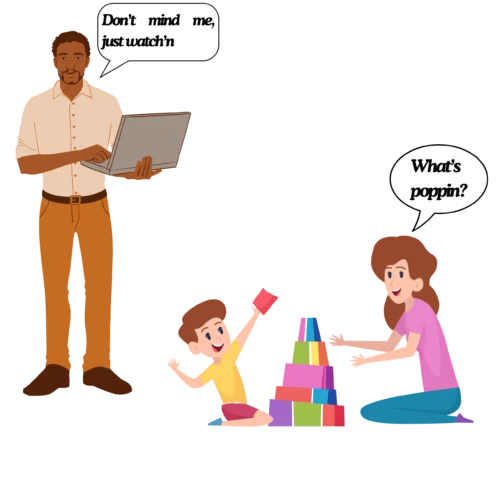Supervision Requirements
Table of Contents
In this post, we will be covering supervision requirements, task number nineteen on the RBT Competency Assessment. Supervision is a critical component in the practice of Applied Behavior Analysis (ABA) and is essential for ensuring that Registered Behavior Technicians (RBTs) deliver high-quality services. Effective supervision not only supports the professional growth of RBTs but also enhances the outcomes for clients receiving ABA therapy.
Welcome back to our RBT Competency Assessment blog post series! In this series, we are exploring each task on the RBT Competency Assessment to help new Behavior Technicians (BTs) prepare for their initial competency assessments and provide a valuable refresher for Registered Behavior Technicians (RBTs) renewing their certification.
In this blog post, we will discuss why RBTs get supervision and why it is important. We will also cover the supervision requirements for RBTs, including direct observation with a client, meetings without the client, minimum supervision hours, and documentation and feedback. By understanding and adhering to these requirements, RBTs can ensure they are providing the best possible care for their clients while continuing to develop their professional skills. Let’s begin by exploring why supervision is essential for RBTs.
Why RBTs Get Supervision
Explanation of the Purpose and Benefits of Supervision:
Supervision in ABA is designed to ensure that RBTs provide high-quality, effective services to clients. Supervisors, typically Board Certified Behavior Analysts (BCBAs), offer guidance, support, and feedback to RBTs to help them improve their skills and address any challenges they face in their work. This collaborative relationship fosters professional growth and enhances the quality of care provided to clients.
Importance in Ensuring High-Quality ABA Services and Professional Development:
Supervision helps maintain a high standard of ABA practice by ensuring that RBTs are implementing interventions correctly and ethically. It provides a structured environment for learning and skill development, enabling RBTs to stay updated with the latest practices and methodologies in ABA. This continuous professional development is crucial for delivering effective therapy and achieving positive client outcomes.

Why Supervision for RBTs is Important
Role in Maintaining Ethical Standards and Effective Practice:
Supervision is vital for maintaining ethical standards in ABA practice. Supervisors ensure that RBTs adhere to the ethical guidelines set forth by the Behavior Analyst Certification Board (BACB). This oversight helps prevent unethical behavior and promotes integrity in the delivery of ABA services. Effective supervision also ensures that RBTs are using evidence-based practices and interventions, which are critical for achieving meaningful behavior change.
Impact on Client Outcomes and Professional Growth:
Supervision positively impacts client outcomes by ensuring that interventions are implemented correctly and consistently. Supervisors provide RBTs with feedback and strategies to improve their practice, which directly benefits clients by enhancing the effectiveness of therapy. Additionally, supervision supports the professional growth of RBTs by offering opportunities for skill development, problem-solving, and career advancement. This ongoing support helps RBTs become more competent and confident in their roles, ultimately benefiting the clients they serve.
Supervision Requirements for RBTs
Direct Observation with a Client:
- Description: Supervisors observe RBTs during therapy sessions with clients to provide immediate feedback and guidance. This hands-on approach allows supervisors to assess the RBT’s techniques, interactions, and overall performance in real-time.
- Example: A supervisor observes an RBT conducting a Discrete Trial Training (DTT) session with a client, providing feedback on the RBT’s prompting techniques and reinforcement strategies.
Meeting Without the Client:
- Description: Regular one-on-one meetings between the RBT and supervisor to discuss progress, challenges, and professional goals. These meetings provide a platform for reflection, feedback, and planning for future sessions.
- Example: During a monthly supervision meeting, the RBT and supervisor review case notes, discuss the client’s progress, address any challenges faced during sessions, and set goals for professional development.
Minimum Supervision Hours with an Example:
- Description: RBTs must receive supervision for a minimum percentage of their total monthly hours. This ensures that supervision is consistent and sufficient to support the RBT’s development.
- Example: An RBT working 40 hours per month with clients must receive at least 5% of those hours (i.e., 2 hours) in supervision. This could include a combination of direct observation and meetings without clients.
At Least Two Face-to-Face Meetings:
- Description: RBTs are required to have at least two face-to-face meetings with their supervisor each month. One of these meetings must involve direct observation of the RBT working with a client, and the other must be a meeting of at least 15 minutes without the client present. This ensures comprehensive supervision that addresses both practical and reflective aspects of the RBT’s work.
- Example: One meeting could involve the supervisor observing the RBT during a session with a client, while the other could be a 15-minute check-in meeting to discuss the RBT’s progress, challenges, and goals without the client present.
Documentation and Feedback:
- Description: Supervisors and RBTs must document supervision sessions, including the topics discussed, feedback provided, and action plans. This documentation is essential for tracking progress and ensuring accountability.
- Example (Clinic-based): After each supervision session, the supervisor documents the feedback given to the RBT, notes any areas for improvement, and outlines action steps for the RBT to take before the next session. The RBT reviews this documentation to ensure they understand and implement the feedback.
FAQ on Supervision Requirements for RBTs
The following FAQ section consists of the four most Googled questions on the topic of supervision requirements for RBTs:
- Q: How many hours must an RBT be supervised per month?
- A: RBTs must receive supervision for at least 5% of their total monthly hours spent working with clients. For example, if an RBT works 40 hours per month with clients, they must receive at least 2 hours of supervision.
- Q: How do I keep track of RBT supervision hours?
- A: Supervision hours can be tracked using documentation forms provided by the supervising BCBA. These forms should detail the date, duration, and content of each supervision session, ensuring all supervision activities are recorded accurately.
- Q: Who supervises an RBT?
- A: An RBT is supervised by a Board Certified Behavior Analyst (BCBA) or a Board Certified Assistant Behavior Analyst (BCaBA). The supervisor provides guidance, feedback, and support to ensure the RBT delivers effective and ethical ABA services.
- Q: What are the criteria for RBT supervision?
- A: The criteria for RBT supervision include at least two face-to-face meetings per month, one involving direct observation with a client and the other a 15-minute meeting without the client present. Additionally, supervision must cover at least 5% of the RBT’s total monthly hours, include documentation and feedback, and ensure adherence to ethical and professional standards.
Final Thoughts
Supervision is a vital component in the practice of Applied Behavior Analysis (ABA), ensuring that Registered Behavior Technicians (RBTs) deliver high-quality, ethical, and effective services. By adhering to supervision requirements, RBTs can continuously improve their skills, address challenges, and provide the best possible care for their clients.
Understanding the key aspects of supervision—such as direct observation with a client, meetings without the client, minimum supervision hours, and proper documentation and feedback—is essential for RBTs to succeed in their roles. Additionally, regular face-to-face meetings with supervisors help RBTs receive the support and guidance they need to grow professionally.
By prioritizing supervision and maintaining a commitment to professional development, RBTs can ensure they are providing the most effective and ethical ABA services, ultimately benefiting their clients and advancing in their careers.
Explore More Resources
If you found this guide on supervision requirements for RBTs helpful, be sure to explore more resources on our website. We offer a wealth of information, including detailed articles, study guides, and practical tips to help you succeed as a Registered Behavior Technician (RBT).
Are you preparing for the RBT competency assessment? Check out our comprehensive study materials and mock exams designed to help you ace the test and become a confident, competent RBT.
For more information on becoming a Registered Behavior Technician and for the latest research and resources in Applied Behavior Analysis, visit the Behavior Analyst Certification Board (BACB) website.
Share this blog with your peers and colleagues to spread the knowledge and support the ABA community!



